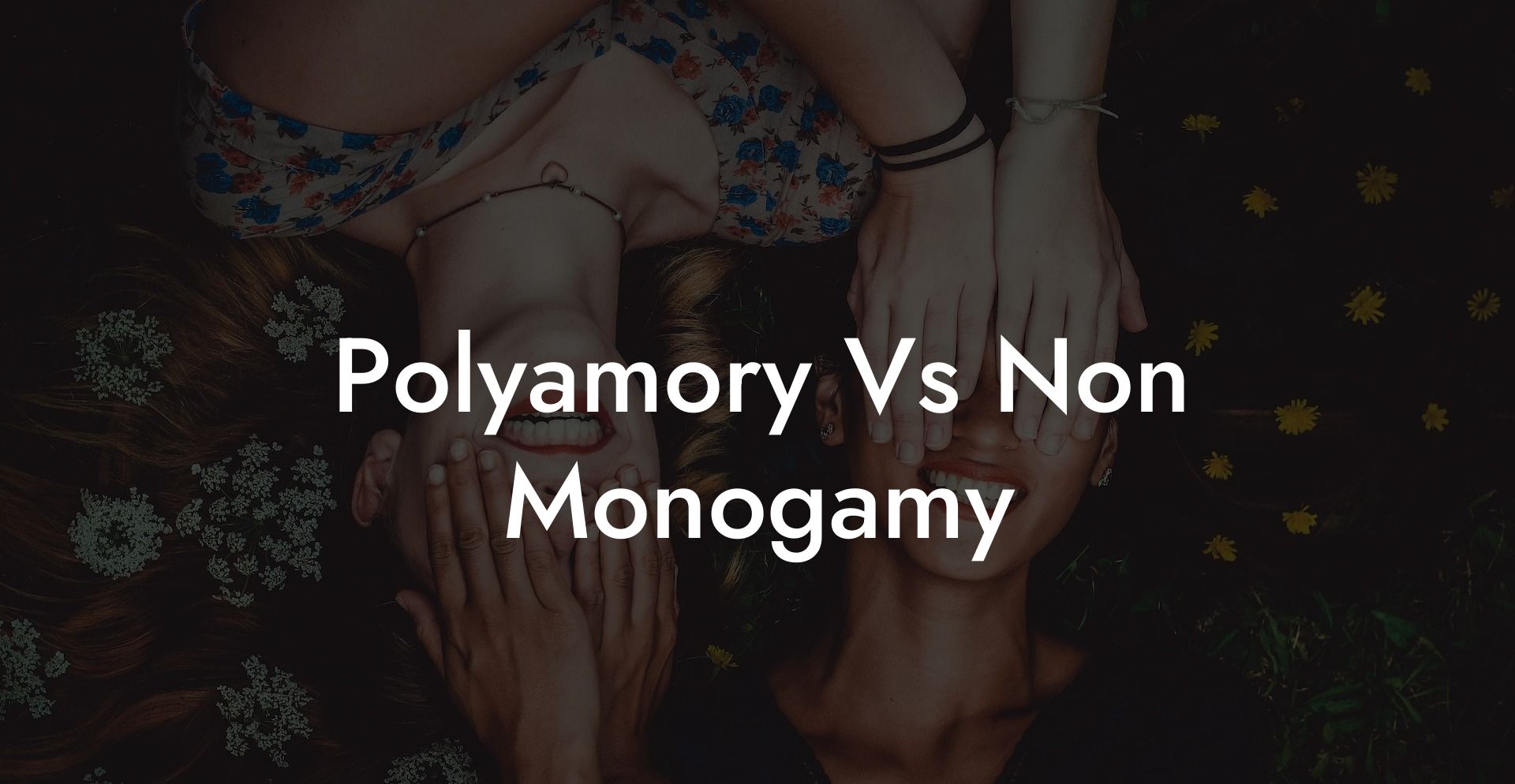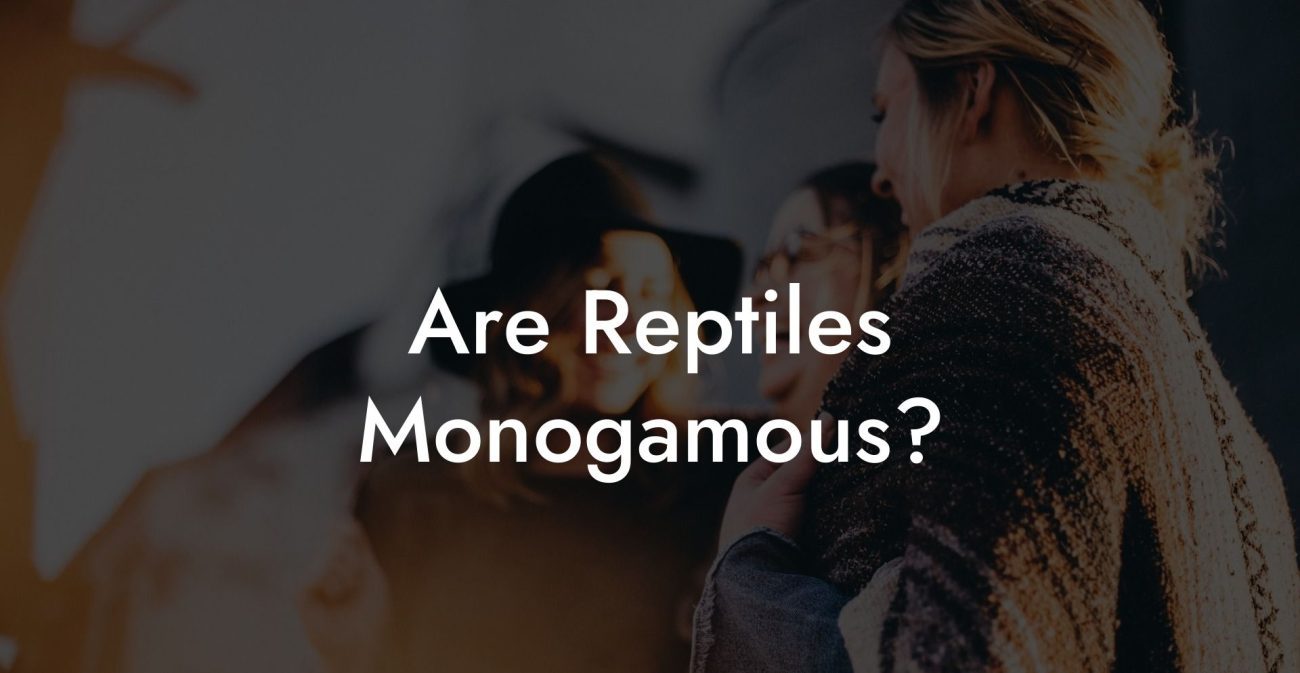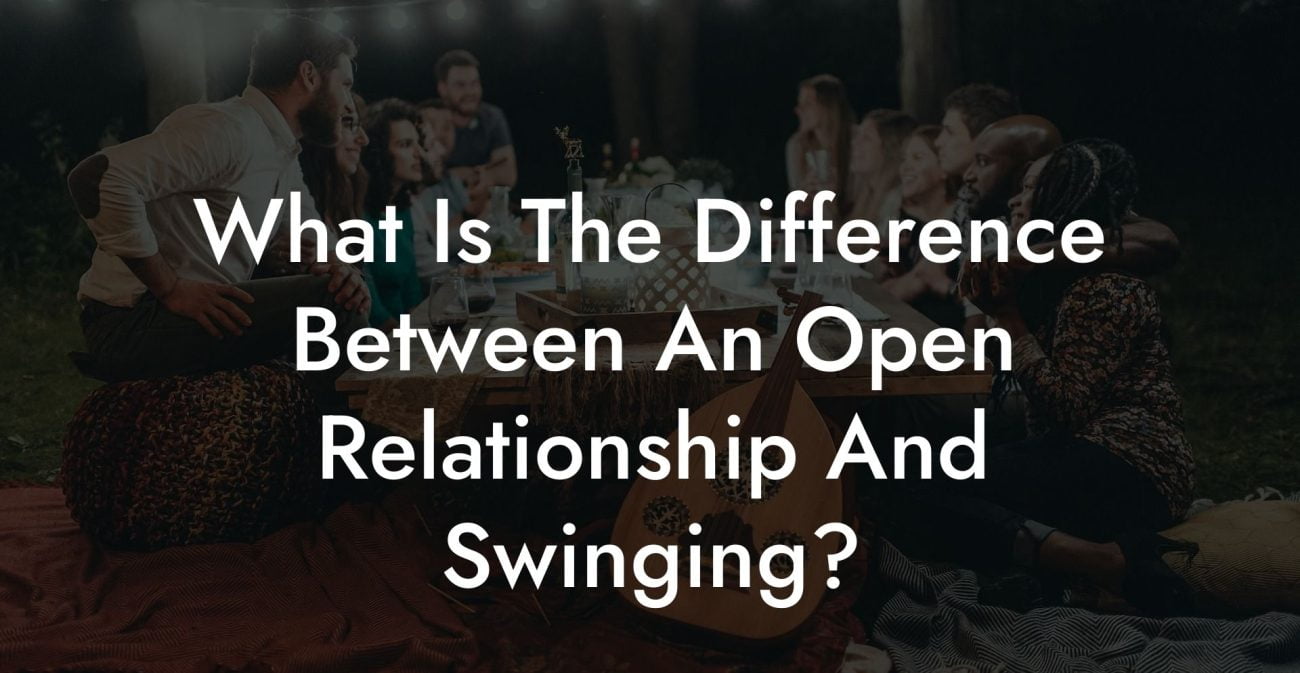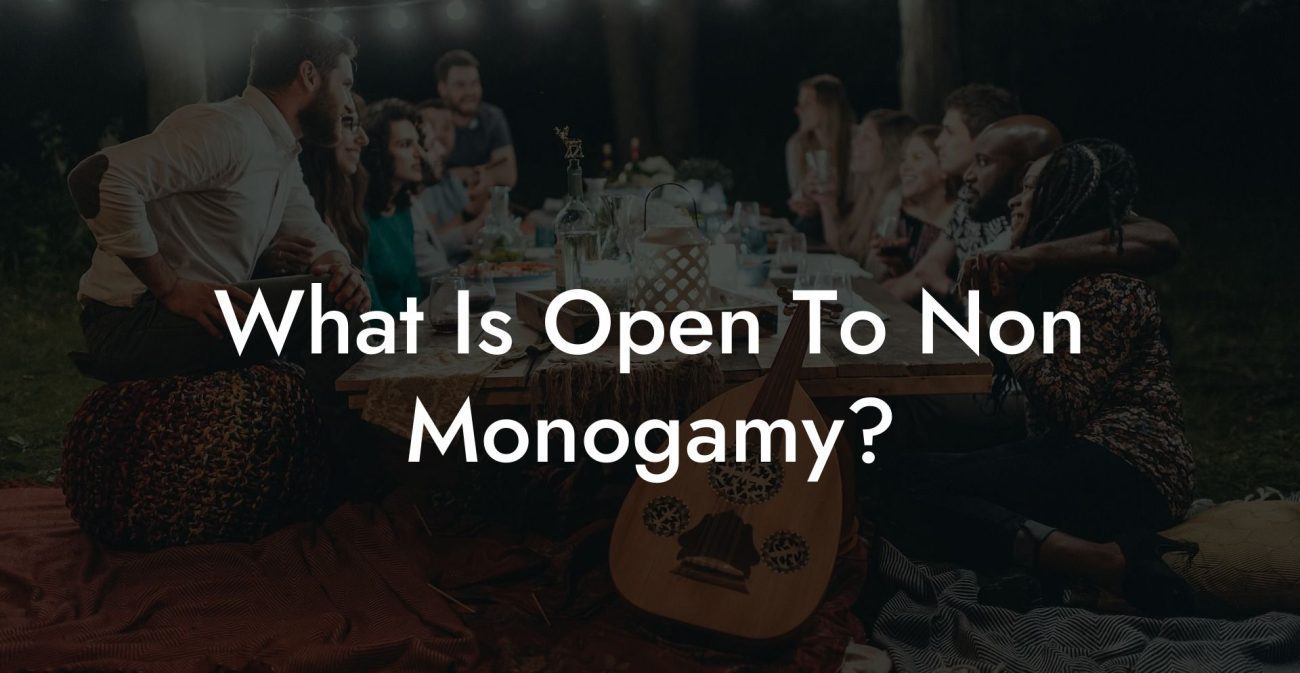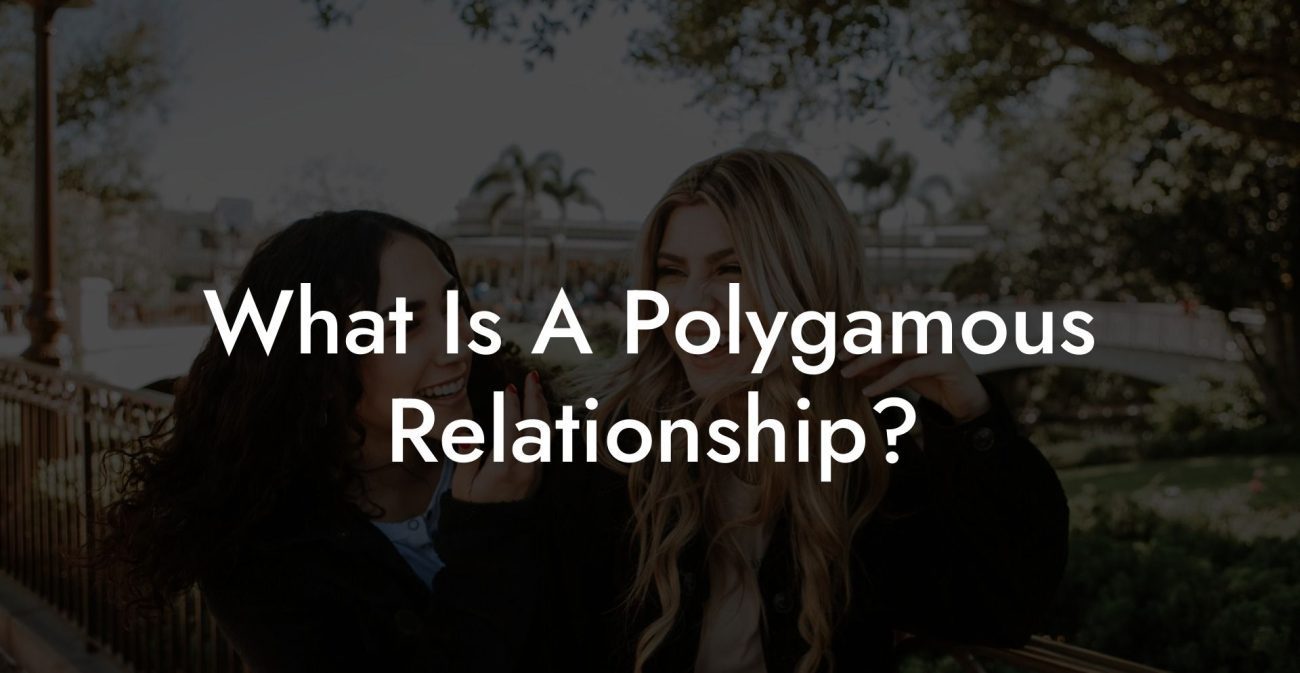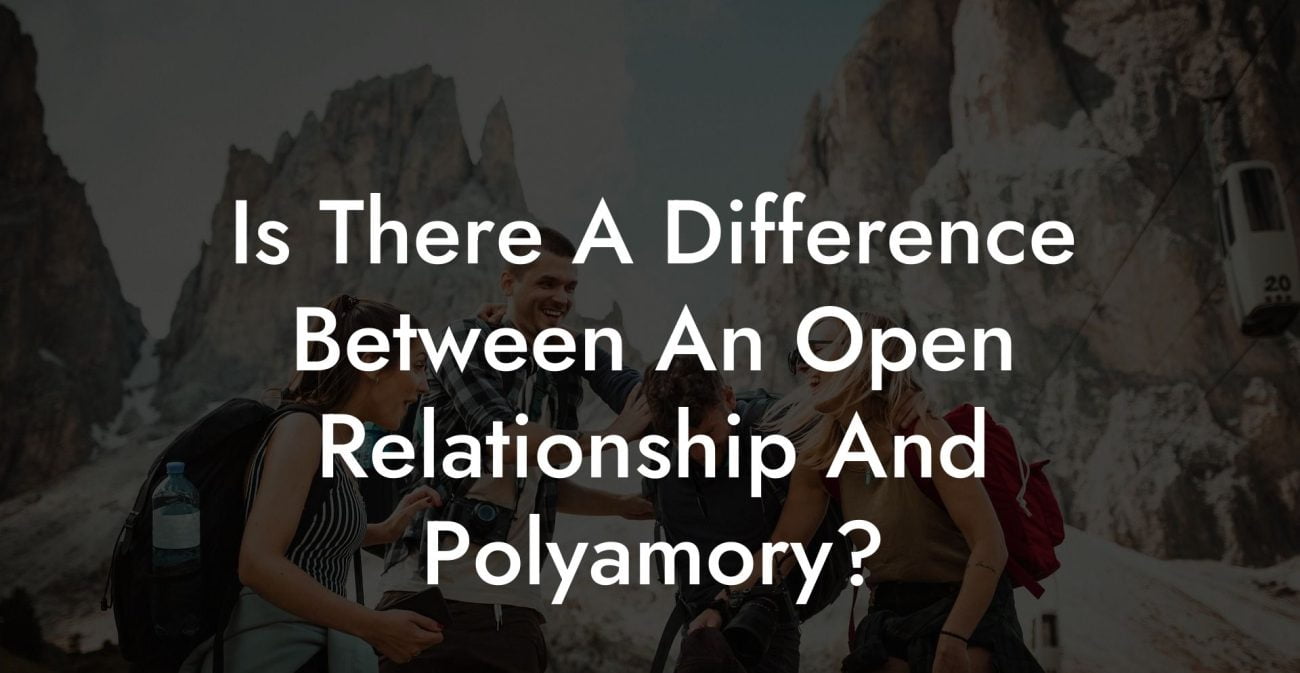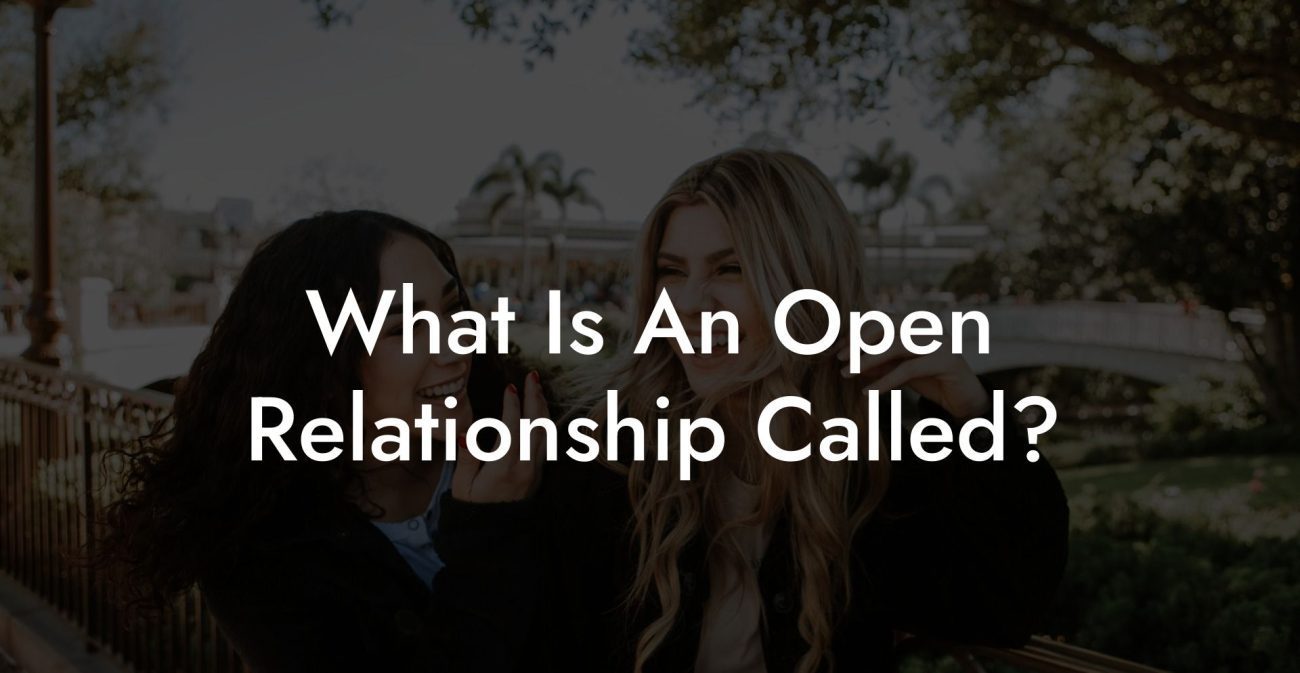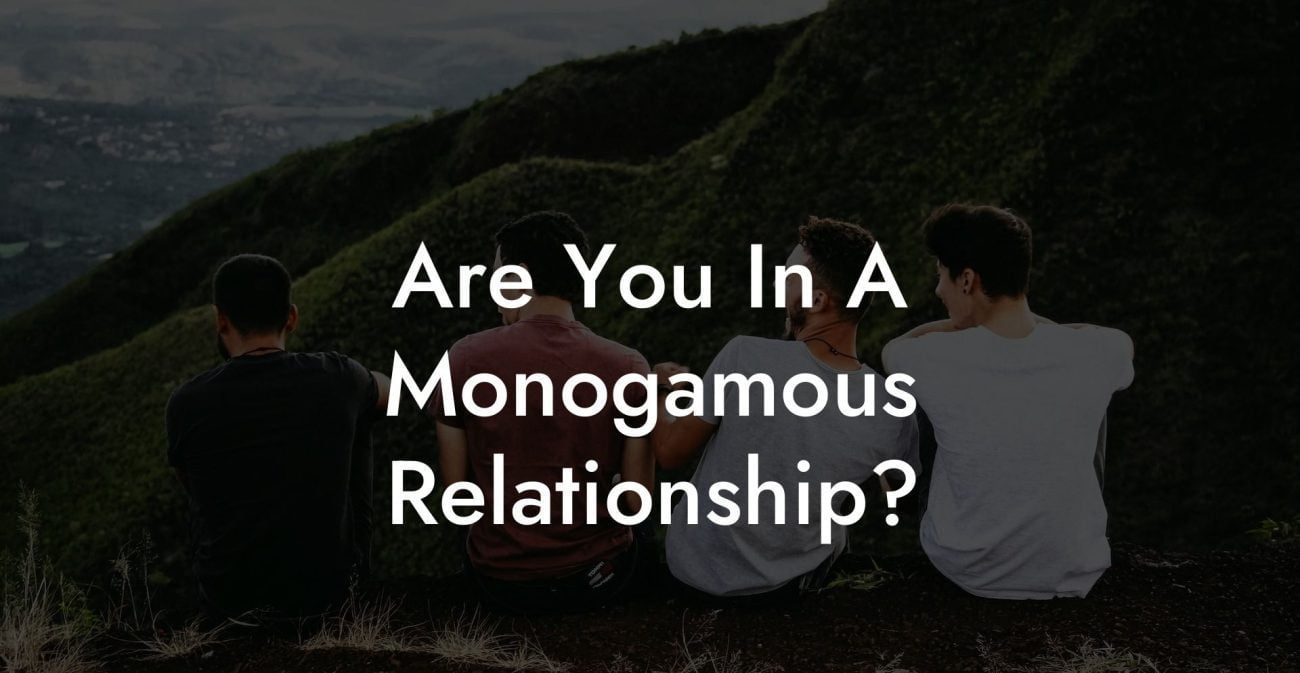In a world that's increasingly open to the exploration of different relationship structures, the terms polyamory and non-monogamy are often used interchangeably. However, they have distinct differences that are important to understand. In this guide, we will delve deep into the contrasts between polyamory and non-monogamy, providing a clear understanding of each concept so you can better navigate your own relationships.
Polyamory Vs Non Monogamy Table of Contents
Defining Polyamory and Non-Monogamy
Defining Polyamory and Non-Monogamy
Polyamory
Polyamory is a form of non-monogamous relationship wherein individuals have multiple romantic, emotional, and often sexual relationships with the full knowledge and consent of everyone involved. The name itself comes from the combination of the Greek word "poly," meaning "many," and the Latin word "amor," meaning "love." Some key aspects of polyamory include open communication, trust, and a focus on maintaining strong emotional connections.
Non-Monogamy
Non-monogamy is a broader term that encompasses any relationship structure that deviates from the traditional monogamous model, in which two individuals are in a committed, exclusive relationship. Non-monogamous relationships may take various forms, including open relationships, swinging, casual dating, and polyamory.
Comparing Polyamory and Non-Monogamy: The Key Differences
Emotional Connection
One primary difference between polyamory and other forms of non-monogamy lies in the emotional component. Polyamorous relationships prioritize strong emotional connections and romantic involvement between multiple partners. In contrast, other non-monogamous relationships, such as casual dating or swinging, may focus on sexual encounters with multiple partners without the expectation of deeper emotional bonds.
Commitment Levels
Non-monogamous relationships can vary in levels of commitment, ranging from casual and non-exclusive to deeply connected and interdependent. Polyamorous relationships often involve long-term, committed connections between multiple partners, creating a complex web of emotional and practical support.
Communication and Boundaries
Polyamorous relationships require open and honest communication between all parties involved. Establishing and maintaining clear boundaries is crucial to navigating these complex emotional landscapes. In more casual non-monogamous relationships, communication regarding boundaries may be less frequent or less in-depth.
Choosing the Right Relationship Model for You
- Self-reflection: Analyze your needs, desires, and emotional capacity when considering adopting a relationship model.
- Communication: Have open discussions with your current or potential partners about your expectations, boundaries, and what you want out of the relationship.
- Research: Read about different relationship structures and connect with people who have experience in polyamory or non-monogamy to gain a better understanding.
- Flexibility: Be open to adapt and grow in your relationships, and be prepared for shifts in your desires or preferences over time.
Polyamory Vs Non Monogamy Example:
Jane and Mark have been in a monogamous relationship for several years but decide to explore non-monogamy. After discussing their wants and needs, they agree to engage in casual dating with others while maintaining their primary emotional connection with each other. This arrangement works for them because they value their emotional bond but desire the freedom to explore sexual connections with others.
On the other hand, Alice, Ben, and Carl form a polyamorous triad, in which each individual is romantically and emotionally involved with both of the others. They have built complex emotional and practical connections between all three of them, prioritizing open communication and trust to sustain their triad.
Now that you have a clearer understanding of the differences between polyamory and non-monogamy, take a moment to reflect on which relationship structure aligns best with your desires, values, and lifestyle. Remember that fostering open communication, trust, and understanding is at the core of maintaining healthy, fulfilling connections. Regardless of the relationship model you choose, always prioritize the needs and wants of everyone involved. If you found this guide helpful, consider sharing it with others and exploring more content on The Monogamy Experiment to continue expanding your knowledge on relationships and love.

